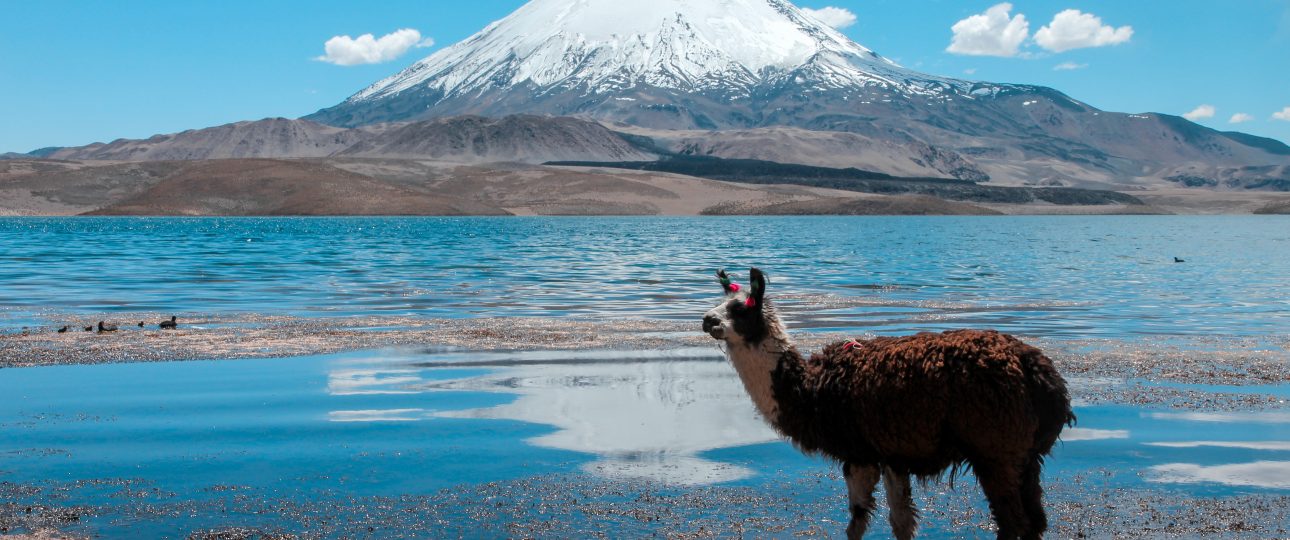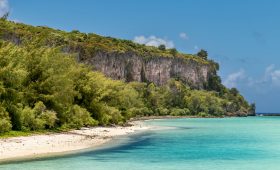Lauca National Park: A Guide to Chile’s Andean Wilderness
Location and Natural Beauty
Lauca National Park is situated in the far north of Chile, close to the Bolivian border. This park, part of the Andean range, is renowned for its diverse ecosystems and striking landscapes. At an elevation of around 4,500 meters above sea level, it offers a mix of alpine tundra, snowcapped volcanoes, and expansive highland plateaus.
A standout feature is Lake Chungará, one of the world’s highest lakes, known for its emerald-green waters and the backdrop of the Payachatas peaks. The park also includes the Cotacotani lagoons, interconnected bodies of water that add to the park’s scenic allure.
Flora and Fauna
The park’s flora is adapted to its high-altitude environment, featuring various cacti, highland grasses, and wildflowers. These plants thrive despite the harsh climate, creating a unique botanical landscape.
Wildlife enthusiasts will find Lauca National Park a rewarding destination. The park is home to vicuñas, the wild relatives of alpacas, easily spotted in small groups. Guanacos, larger relatives of vicuñas, and herds of domestic llamas and alpacas can also be seen. Birdwatchers can enjoy sightings of Chilean and Andean flamingos, particularly around the ponds near Retén Chucuyo and the southeastern shores of Lake Chungará. Other notable birds include the Giant Coot, Silvery Grebe, and the occasional Lesser Rhea.
Best Time to Visit
The optimal time to explore Lauca National Park is during the dry season, from May to September. This period offers more stable weather conditions, though temperatures can range from 5–20 °C during the day and drop to -15 °C at night. Visitors should prepare for cold conditions, especially at higher altitudes.
While the park can become busy from June to August, visiting in May or September can provide a quieter experience. However, be prepared for the challenges of high-altitude travel, such as acclimatization needs.
How to Get There
The nearest major city is Arica, which has an international airport. From Arica, it’s about a three-hour drive up Highway 11 to reach the park. However, roadwork can cause delays, so check for updates before traveling. There are no fuel stations between Arica and the park, so ensure your vehicle is well-fueled before departure.
Putre, a town located 12 km from the park, serves as a convenient base for acclimatization and exploration. It offers accommodations and is a good starting point for those planning to drive into the park.
Local Transportation
Within Lauca National Park, having a private vehicle is the most convenient way to explore. The park’s vastness and remote locations make self-driving ideal for those who want to explore at their own pace. For those who prefer not to drive, guided tours from Putre are available, offering transportation and insights into the park’s history and wildlife.
Buses from Arica to La Paz pass through the park, but they may not stop at convenient locations for overnight stays. It’s advisable to first reach Putre and then plan excursions into the park from there.
Notable Sites and Activities
- Lake Chungará: A must-visit for its stunning views and birdwatching opportunities.
- Tambo de Chungará: An archaeological site offering insights into the region’s history.
- Parinacota: A 17th-century colonial village with unique architecture.
- Las Cuevas Hot Springs: Natural hot springs with water temperatures around 31°C.
While Lauca National Park offers breathtaking natural beauty and diverse wildlife, visitors should be prepared for high-altitude conditions and limited amenities. Plan accordingly to make the most of this unique Andean wilderness.




